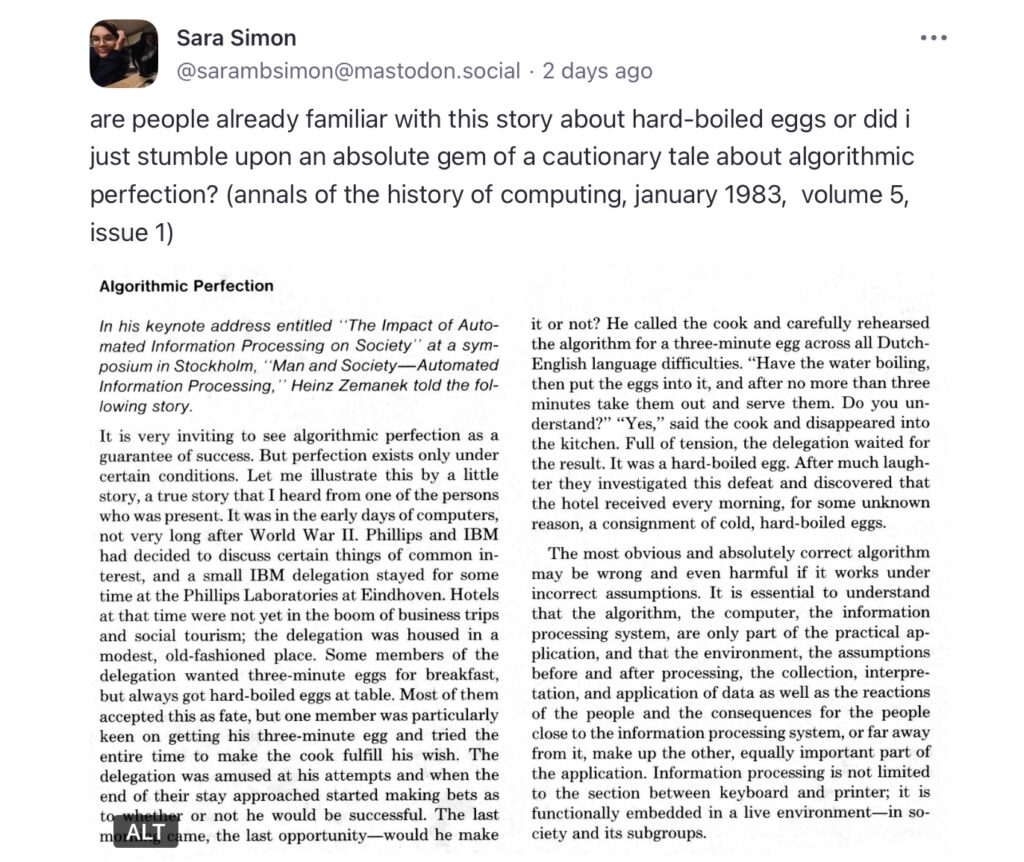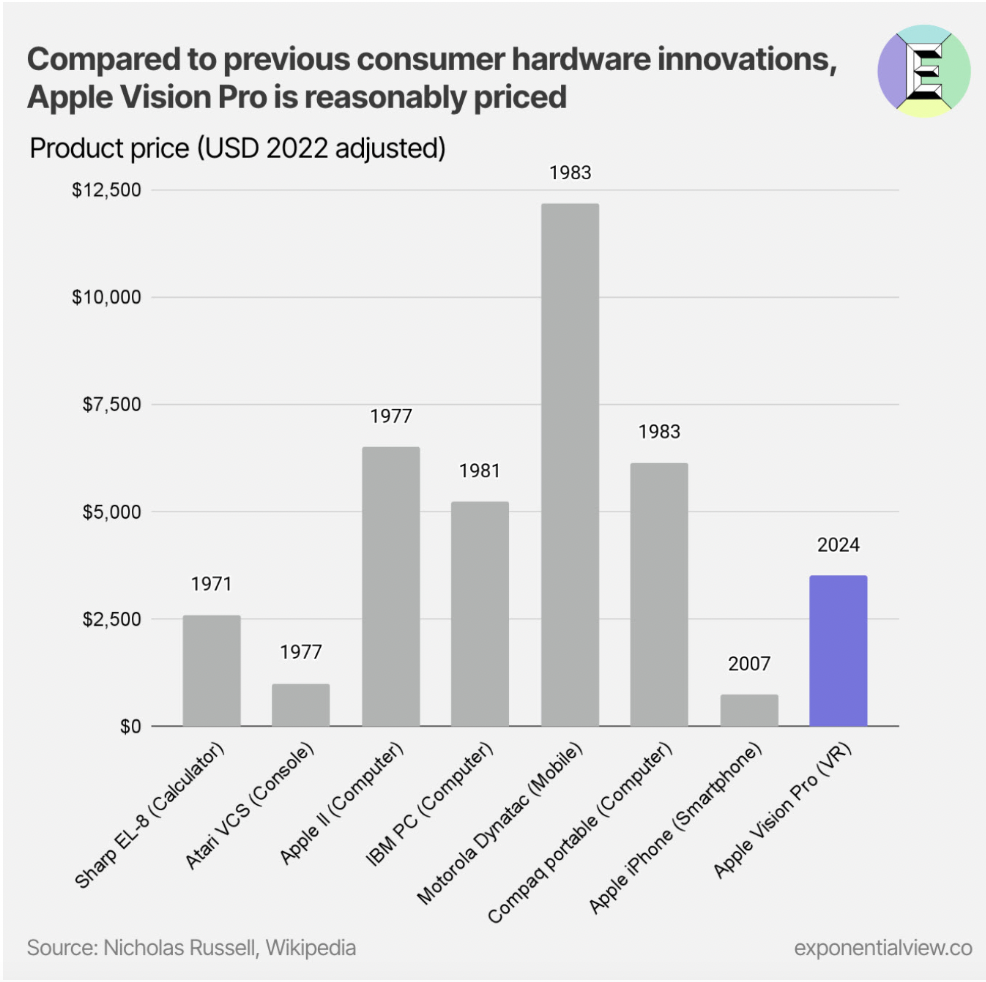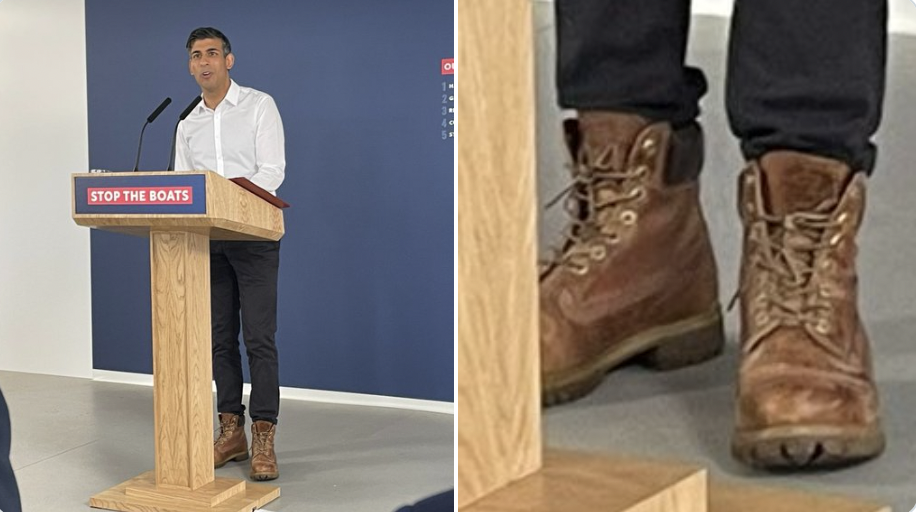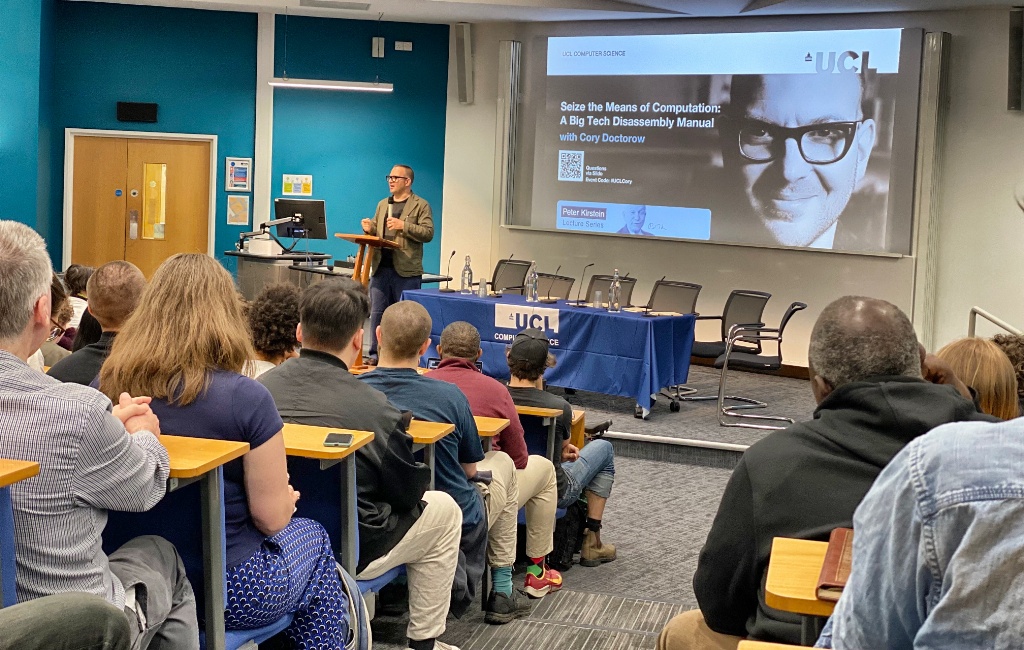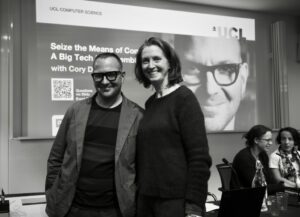Where have all the cyclists gone?
 Seen in a nature reserve yesterday.
Seen in a nature reserve yesterday.
Quote of the Day
”Military glory is the attractive rainbow that arises in showers of blood.”
Musical alternative to the morning’s radio news
The Beach Boys | A Day In The Life Of A Tree
Link
Long Read of the Day
Setting time on fire and the temptation of The Button
Ethan Mollick has discovered that, when composing a document in Google Docs, he’s now offered a ‘button’ labelled “Help me write” which, when clicked, invites you to prompt Bard (Google’s LLM) to write the article/essay/email on which you were embarking.
As far as I can see, this facility is currently only available to selected users of Google Docs in the US, but it’ll soon be everywhere. I do much of my writing in Drafts (which runs only on Apple kit) and it already offers a similar button which summons ChatGPT to one’s aid (if that is the correct term for the services of a stochastic parrot).
Mollick has written an interesting post on the longer-term implications universal acceptance of the apparent shortcuts offered by ‘AI’.
So why do I think this is a big deal? Because, when faced with the tyranny of the blank page, people are going to push The Button. It is so much easier to start with something than nothing. Students are going to use it start essays. Managers are going to use it to start emails, or reports, or documents. Teachers will use it when providing feedback. Scientists will use to write grants. And, just as we are seeing with Adobe incorporating AI into Photoshop, when AI gets integrated into a familiar tool, adoption become simple. Everyone is going to use The Button.
Now, there are a million implications to outsourcing our first drafts to AI. We know people anchor on the first idea they see, influencing their future work, so even drafts that are completely rewritten will be AI-tinged. People may not be as thoughtful about what they write, or the lack of effort may mean they don’t think through problems as deeply. We may not learn how to write as well. We may be flooded with low-quality content. All of these implications are significant, but I want to focus on one thing that, as an academic at a business school, really stands out to me: the coming crisis of meaning…
It’s an interesting disquisition on the way the time one puts into composing a document can provides an implicit signal about its worth, which may be useful to its recipient. One example he uses is a task that many academics, especially senior ones, have to do — write letters of recommendation for students or junior colleagues. I have to do this quite a lot, and I put a fair amount of time into it. Recipients (academics often have to write the same kinds of letter) will easily be able to spot how much work has gone into a reference, and assign a value to it accordingly. But what if I started to use a tool like GPT-4 which can rattle off plausible-looking references in a minute or two?
Mollick’s essay has prompted an interesting response from one of his readers, Pascal Montjovent:
As an early adopter, I’ve been immersed in AI and digital technologies, employing tools like GPT and Midjourney in my day-to-day activities for months now. Far from being a luddite, I embrace these developments with open arms, recognizing their potential to shape the future.
But in my field, ever since film cameras were supplanted by digital cameras, and subsequently by smartphones, everyone seems to think that creating a movie is simple.
Clients and agencies have started to cut down on delivery times and budgets. Faith in the expertise of professionals has plummeted.
As a result, projects are less prepared, the duration of shoots is diminished, as is that of post-production: “You don’t need so much time to deliver this edit or mix to me.”
What fades away with this shift towards digital and AI, is the time for reflection, the capacity to take a step back and contemplate what we are doing. The ability to reexamine one’s work after a break or to review an edit after a good night’s sleep is dwindling.
Soon, everyone will be familiar with the concept of “simply pressing The Button”.
Everyone will know that a letter of recommendation can be written in twelve minutes and that minutes of a meeting can be automatically transcribed during the work session.
Yet, the time saved won’t be repurposed for more enriching activities. It will merely serve as a means to accept more work, for the same pay of course, and without the luxury of reflection time.
We’ve drawn closer to the condition of a hamster in its wheel. We are running faster. But for what purpose, and in which direction? This is the question that looms large and, to my mind, requires our immediate attention and action.
A lawyer got ChatGPT to do his research, but he isn’t AI’s biggest fool
My column in yesterday’s Observer:
This story begins on 27 August 2019, when Roberto Mata was a passenger on an Avianca flight 670 from El Salvador to New York and a metal food and drink trolley allegedly injured his knee. As is the American way, Mata duly sued Avianca and the airline responded by asking that the case be dismissed because “the statute of limitations had expired”. Mata’s lawyers argued on 25 April that the lawsuit should be continued and appending a list of over half a dozen previous court cases that apparently set precedents supporting their argument.
Avianca’s lawyers and Judge P Kevin Castel then dutifully embarked on an examination of these “precedents”, only to find that none of the decisions or the legal quotations cited and summarised in the brief existed.
Why? Because ChatGPT had made them up. Whereupon, as the New York Times report puts it, “the lawyer who created the brief, Steven A Schwartz of the firm Levidow, Levidow & Oberman, threw himself on the mercy of the court… saying in an affidavit that he had used the artificial intelligence program to do his legal research – ‘a source that has revealed itself to be unreliable’.”
This Schwartz, by the way, was no rookie straight out of law school…
Do read the whole thing
Why Trump will be the GOP candidate next year
Janan Ganesh wrote a very perceptive column in the Financial Times (behind the paywall) about Ron DeSantis’s chances of defeating Trump for the Republican nomination. The Florida governor is under the impression that evidence of his ability to get things done in his home state gives him an advantage in the contest with Trump.
In this, Ganesh argues, he is deluded. This contest is not about any kind of competence, but about something else entirely.
“Consider for a moment,” he writes,
what Donald Trump gives to his average follower. Membership in a vast nationwide communion of like-minded people. A paternal figure in a confusing world. The frisson of transgression: middle-aged whites don’t often in life get to play the rebel.
Next to all this, what is the marginal benefit of seeing him win an actual election? What, after that, is the marginal benefit of watching his policies come into force? No doubt, Trump fans would rather have these bonus items than not. But he has done them a profound emotional and almost spiritual service before it ever gets to that.
It is not clear that Ron DeSantis understands this about populism.
Poor DeSantis is logical and thinks that modern politics is about getting things done. Ganesh feels sorry for him.
The extent to which it is about belonging — about replacing the group identity that people once got from a church or a trade union — is lost on his rationalist ken. In this one sense, he thinks like a liberal.
And therefore, in the crazed world of American rightwing politics, he’s doomed.
I suppose I should be pleased about this. When DeSantis first appeared on the horizon I was alarmed: the last thing American democracy needed was a competent autocrat. I needn’t have worried. The choice the American people will have to make next year will be between an elderly but competent Democrat, and an incompetent but buoyant autocrat.
My commonplace booklet
If you live in the UK and drink tap-water (and, let’s face it, who doesn’t?) it’d be worth watching this brief video from openDemocracy. Among other things, it illustrates what happens when a major country turns over its water supply to a bunch of private-equity charlatans.
This Blog is also available as a daily email. If you think that might suit you better, why not subscribe? One email a day, Monday through Friday, delivered to your inbox. It’s free, and you can always unsubscribe if you conclude your inbox is full enough already!


